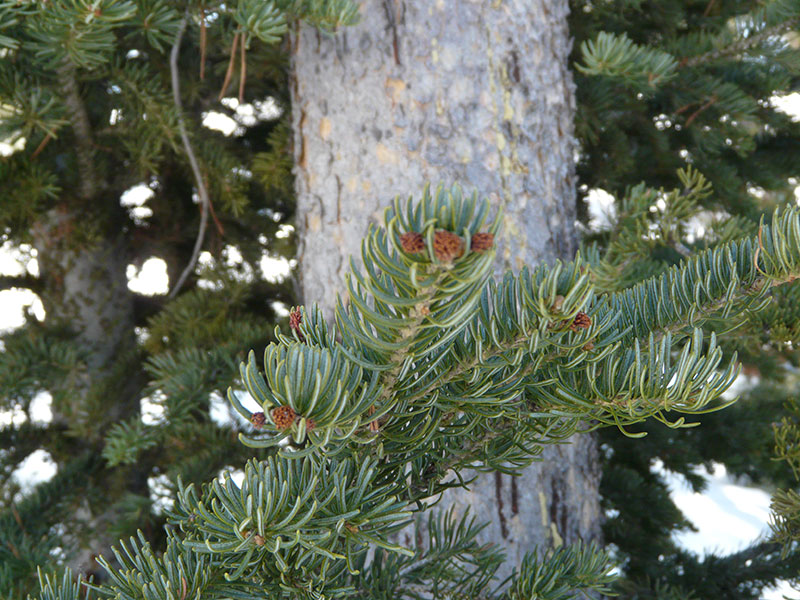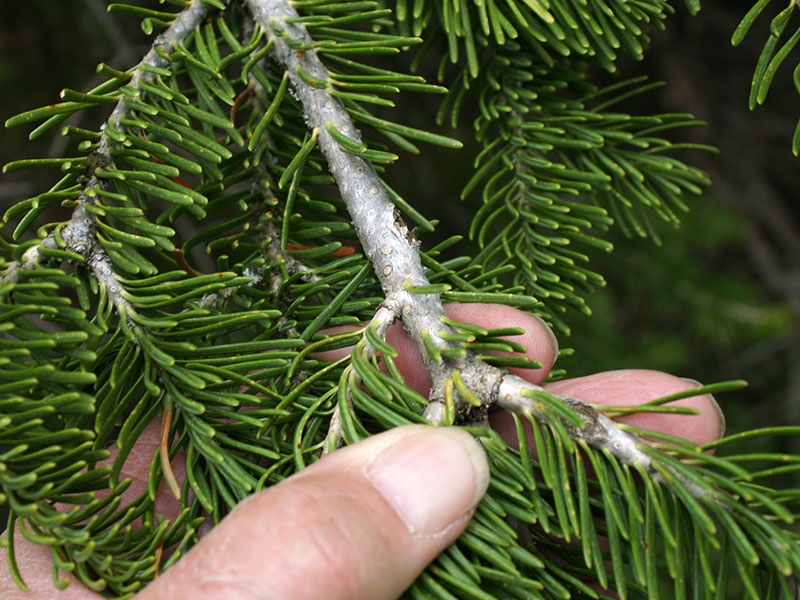Abies lasiocarpa / subalpine fir
- narrow, tall, sharply tipped trees
- cones purple and erect; disintegrate in the fall
- needles flattened, soft and blunt tipped, brushed upward
- needles sessile – no petioles or pegs
- leaf (needle) scars round
Also known as: Rocky Mountain fir
See also: Pine trees, conifers and evergreens
From a distance, it is highly unlikely that one could mistake subalpine fir for anything else in the Valley; the tree crown is so narrow and pointy that it really stands out.
Up close, at the needle level, the most likely to be confused with it would be the spruces, but grab a branch and you will know – spruce needles are stiff, pointy and sharp, and not at all nice to grab; fir needles are softer, flexible and blunt tipped. Fir needles are also sessile – attached directly to the twigs without petioles (like Douglas fir) or woody pegs (like the spruces).
Looked at from the side or end of a branch, the needles are “brushed” to the upper side of the twigs. Each needle is grooved on the upper surface while the lower surface has multiple silver lines of stomata on each side of midrib.
Look closely and you will see there are indeed buds at the ends of the twigs, but they tend to be small and hidden by the needles. At the other end of the needle display, the leaf (needle) scars of subalpine fir are round, and the needles (like Douglas fir, but not spruce) are flat (ish). If you break one, you can at least imagine you can see a single resin duct running below the central main vein.
Subalpine fir, and all members of the genus Abies, have distinctive cones, at least for a while. The female cones are held upright, vertically, rather than hanging down like in all the other Pinaceae. Both male and female cones start out purple-ish and age to brown. The individual mature female cone scales are papery which may account for the fact early in the fall, they disintegrate. This means that if you find a cone on the ground under a tree, it is probably not a fir cone.
The true aficionado, I’m sure, can distinguish the conifers by bark, but I usually can’t. In any case, that of subalpine fir is smooth and grey, with resin blisters when young, becoming broken into large scales as the tree ages.
Subalpine fir gets its name from the fact that it lives at high altitude, but not all the way into the (mostly treeless) alpine zone. It can, however, grow in the alpine zone as and isolated, much stunted and deformed, krummholz, trees. On the other hand, the lower limit is set by environment as well; generally, it is found on not very good soils.
| Family | |
|---|---|
| Inflorescence type | |
| When? | |
| Where? |








